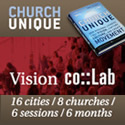Shelby County, TN: 70% of churches are GROWING?!
- Posted by: Todd
- Posted on: Mon, June 18, 2007
- Viewed 48
- (4) comments so far
The news is no surprise to ministers like Dr. Stacy Spencer, leader of New Direction Christian Church at 6120 Winchester. The Hickory Hill congregation, which started as a church plant in 2001 with 60 members from Mississippi Boulevard Christian Church, has experienced explosive growth and now counts more than 11,000 members.
“The harvest is plentiful; people have a hunger for a relationship with God,” Spencer said. “There should not be an empty church in Memphis. We just have to create an atmosphere where people feel comfortable and compelled to come and receive the news of Christ.”
The project, which looked at church membership trends over five years, was conducted by former University of Memphis graduate student Laurie Cooper Stoll and supervised by Dr. Larry Petersen, interim chairman of the Department of Sociology.
Stoll, who prepared the project for her master’s degree, is now a doctoral student at Loyola University in Chicago.
“We found that while 30 percent of the churches in the county are declining, the 70 percent that are growing are doing so at a rapid rate,” Petersen said during a presentation last week at the Poplar-White Station Branch Library. “Growing churches are gaining members faster than declining ones are losing them.”
In the study, Stoll researched 1,200 Christian churches in Shelby County. Of those, she tracked membership trends at 133 randomly selected Catholic and Protestant congregations from 1998 to 2003.
The report draws on Census data from 1990 and 2000 as well as questionnaires and telephone interviews with clergy.
The findings show that Evangelicals, broadly defined as theologically conservative and who teach the Bible as inspired by God, posted the highest level of growth. Close behind were fundamentalists, who accept the Bible as the literal and inerrant Word of God.
Moderate and liberal branches mirrored national trends and experienced smaller gains.
But some of the results are deceptive.
For example, growing churches with a large number of young families tend to attract more members at a quicker rate. On the other hand, declining congregations with the same makeup tend to lose members at a greater rate than declining churches with older members.
And surprising to some may be the revelation that the heart of the city contains the largest percentage of thriving churches.
According to the study, the highest rate of church growth is not in the booming suburbs, but in East Memphis, defined as congregations within the I-240 Loop. Suburban churches—those outside the I-240 Loop—came in second.
And the area with the highest saturation of churches—Downtown—experienced the lowest average rate of growth. That segment is broadly identified as beginning at Front Street and extending east to the University of Memphis, including Midtown and portions of North and South Memphis.
The news is good for Rev. David Garrett, pastor of Asbury United Methodist Church at 2969 Mendenhall. The congregation, which once numbered around 1,000, now counts about a third as many members and is in the process of rebuilding.
“It’s a different congregation than it was 40 years ago, a lot more ethnically and racially diverse,” Garrett said. “We’re fishing for different people now and it’s encouraging to know this area is attracting so many church-goers. We just have to do a better job of getting them here.”
FOR DISCUSSION: Can this really be? If so, why and how is this happening? Doesn’t this fly in the face of everything we hear about church trends? Should we deploy George Barna and every other church researcher to Shelby Country to tell us what they’re doing that’s working? What do you think?
The overwhelming majority of churches in Shelby County are growing, with evangelical congregations leading the way. But regardless of denomination, Christian churches here are thriving, with 70 percent reporting membership gains, according to a study of local church growth and decline that will be published in the "Review of Religious Research" later this year.
Comments
if you want a Globally Recognized Avatar (the images next to your profile) get them here. Once you sign up, they will displayed on any website that supports them.






music director on Mon, June 18, 2007
Maybe these churches have been praying…
Sam Shaw on Mon, June 18, 2007
One contributing factor in the growth of churches in Shelby County may very well be the implosion of one megachurch - Germantown Baptist - loss of around 3000 attenders - and the conflict at another megachurch - Belleuvue - loss of around 3000 members.
I would think baptism statistics would be a valid way to determine the nature of the growth.
Paul Cain on Mon, June 18, 2007
Baptism #’s may be a decent way to determine the nature of the growth, but i doubt it. Many times megachurches baptism requirements and even the way it can be portrayed don’t exibit a Biblical baptism. I have seen baptisms that are unplanned, full of emotion with no meaning, and all sorts of others baptisms at larger churches.
Maybe if these churches have a good process for encouraging and pushing new believers into baptism that would require a little time and sacrifice we might see that the baptism #’s are a little more helpful.
Becca on Thu, July 12, 2007
I agree with Sam that the loss recently at G-town and BBC probably account for a significant amount of the growth, but I also believe that the problems are ultimately being redeemed by Christ for a spiritual revival. We cannot discount that some true growth will come from the adversity.
Page 1 of 1 pages
Post a Comment